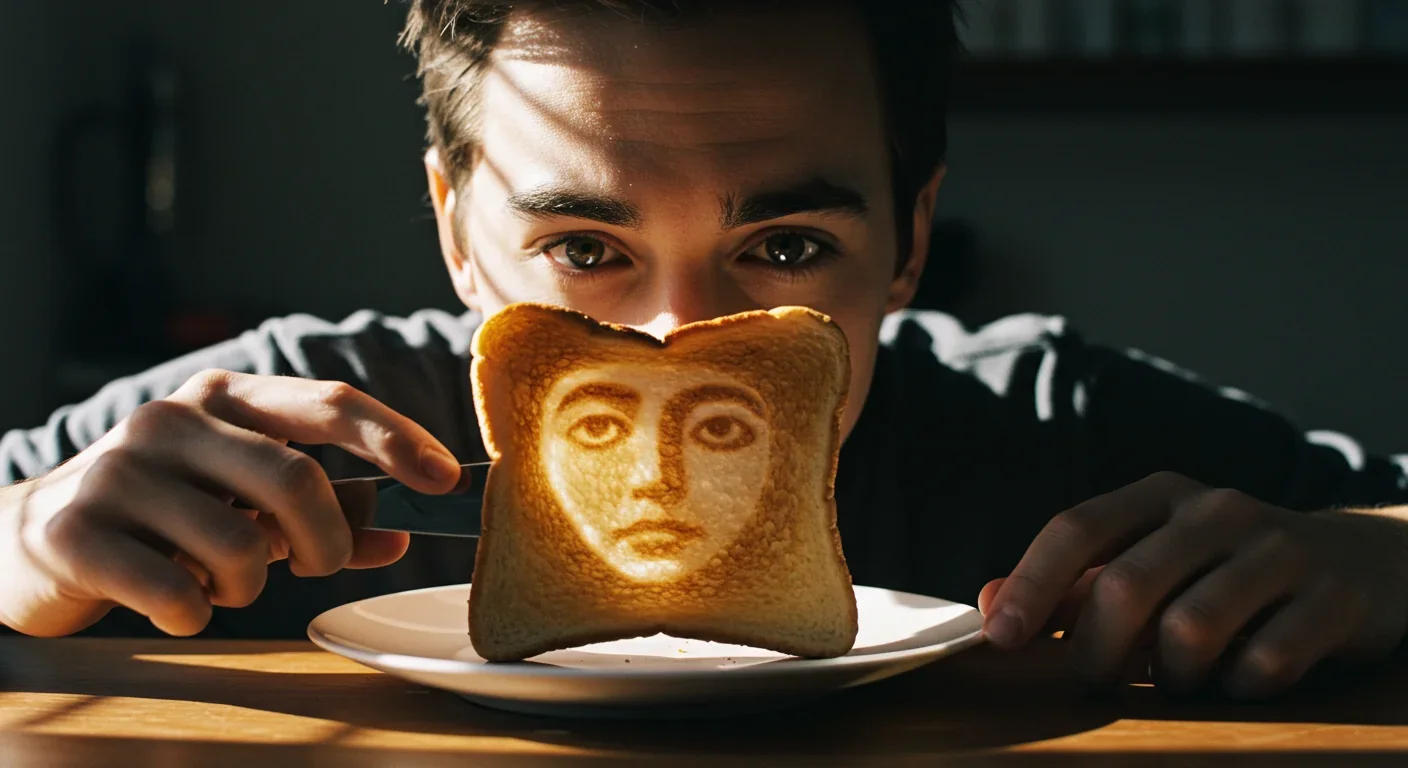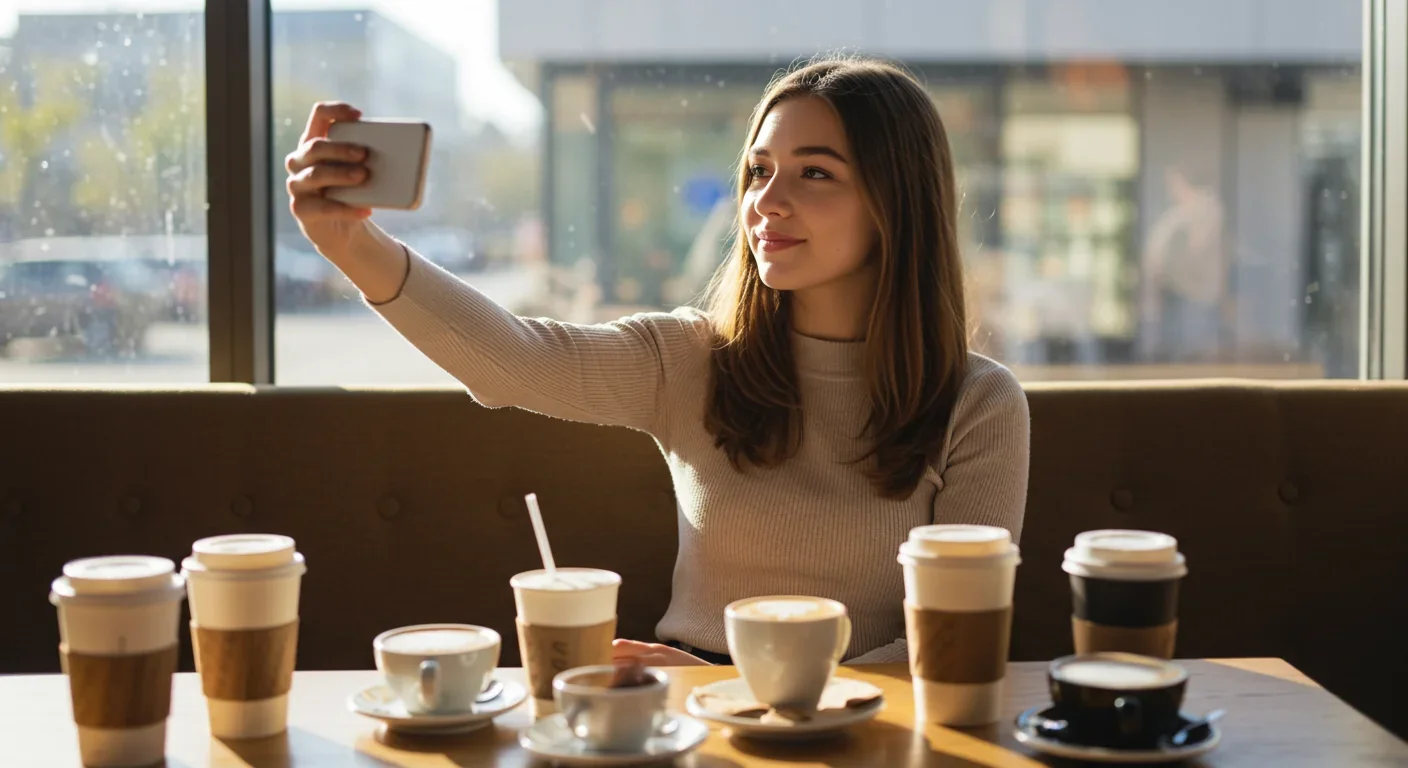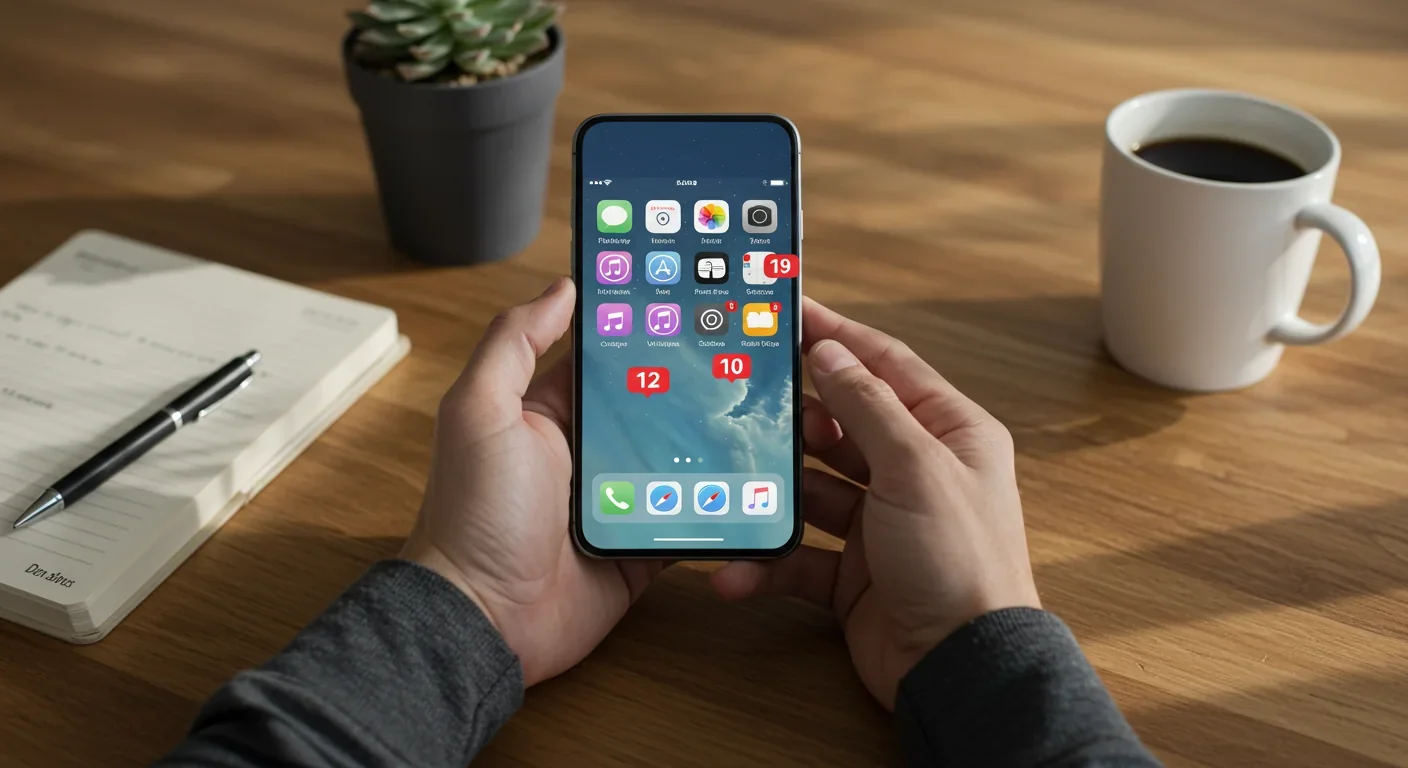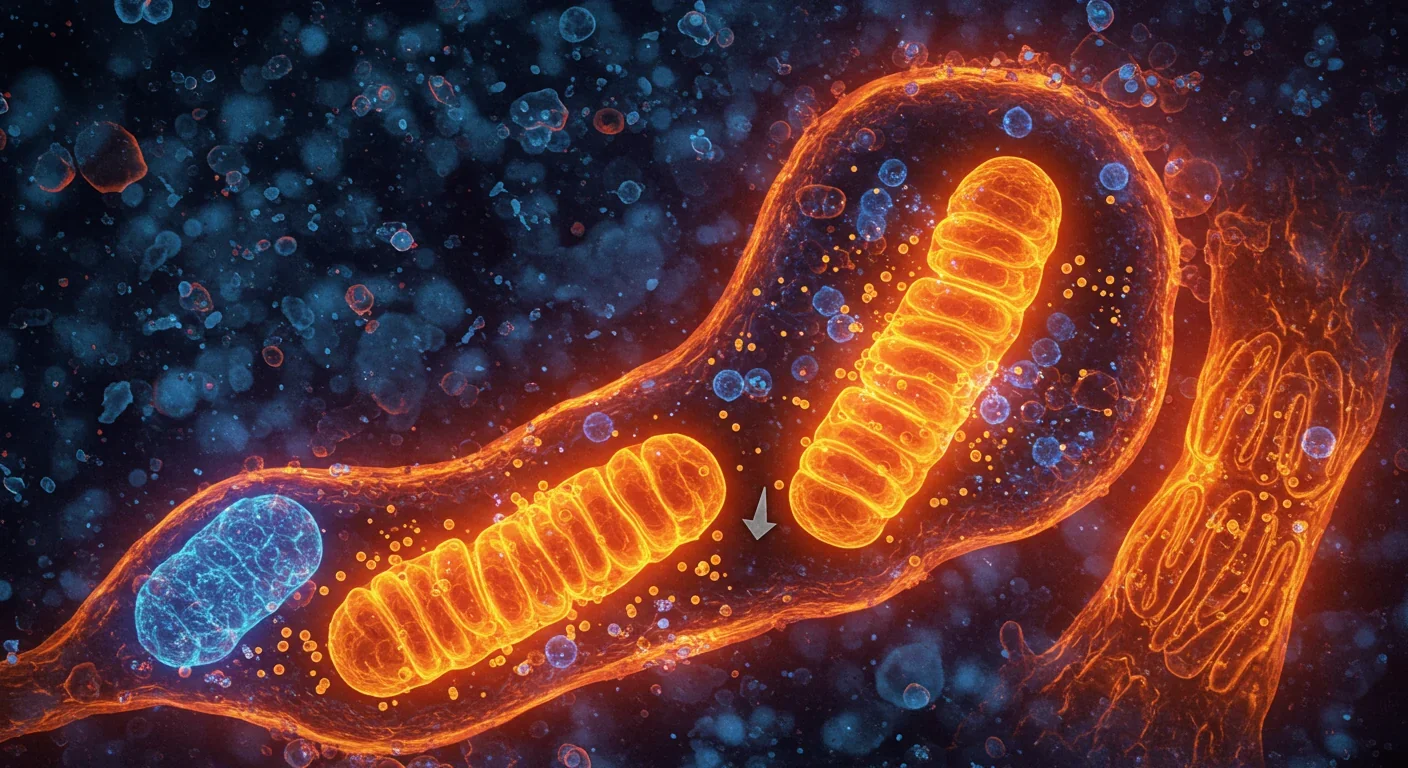Why Your Brain Sees Faces Everywhere: The Pareidolia Effect

TL;DR: Social media has created an 'authenticity paradox' where 5.07 billion users perform carefully curated spontaneity. Algorithms reward strategic vulnerability while psychological pressure to appear authentic causes creator burnout and mental health impacts across all users.

Scroll through your feed right now. See that perfectly imperfect coffee shop photo? The "candid" laugh with friends? The vulnerable caption about mental health struggles? Each one feels authentic, but here's the uncomfortable truth: authenticity has become the most carefully curated commodity in the social media economy. We've entered an era of "curated spontaneity," where being real is the most calculated performance of all.
This isn't just about influencers anymore. With 5.07 billion people now using social media, spending an average of 2 hours and 21 minutes daily scrolling, we're all caught in this paradox. The pressure to appear authentic while maintaining strategic control over our digital identities has become the defining tension of online life.
The authenticity crisis didn't emerge overnight. It evolved from a collision between human psychology and platform design. Social comparison theory, first proposed by psychologist Leon Festinger in 1954, explained how we evaluate ourselves by comparing to others. But Festinger never imagined a world where we'd conduct these comparisons hundreds of times daily through carefully filtered windows into others' lives.
Early social media promised connection and transparency. Remember when Facebook was just college kids sharing party photos? When Twitter meant unfiltered thoughts in 140 characters? Those days feel like archaeological artifacts now. As platforms matured, so did our understanding of their rules. We learned that vulnerability gets engagement, but only the right kind of vulnerability. Raw emotion resonates, but it needs good lighting.
The turning point came when authenticity itself became algorithmic currency. Platforms noticed that "authentic" content, posts that felt unpolished and genuine, generated more engagement than obviously staged material. So they rewarded it. Users caught on. And suddenly, everyone was reverse-engineering spontaneity.
Social media algorithms don't just show you content, they shape what content gets created in the first place. TikTok's algorithm prioritizes completion rates and engagement within the first few seconds. Instagram rewards saves and shares over likes. These mechanics create invisible pressures that mold how we present ourselves.
The result? A strange dance where creators must appear spontaneous while hitting precise algorithmic beats. That "just woke up" selfie? Probably the twelfth take, posted at optimal engagement times. The vulnerable confession? Crafted to trigger saves and shares, carefully calibrated between relatable and aspirational.
Research on Instagram influencers reveals this tension explicitly. Female influencers in Germany described constantly negotiating between "being real" and maintaining their brand. They agonize over showing enough vulnerability to seem authentic without sharing so much that they lose aspirational appeal. One influencer explained checking her "authentic" posts three times before hitting share, adjusting wording to maximize both genuineness and engagement.
The algorithms reward this careful calculation. Posts that hit the sweet spot of curated authenticity see 300% higher engagement than either purely polished or genuinely spontaneous content. Platforms have trained us well.
Why do we do this to ourselves? The psychological mechanisms are more complex than simple vanity. Social comparison on social media triggers fundamental identity formation processes. We don't just want likes, we're literally constructing our sense of self through these digital performances.
Women aged 16-24 spend nearly 3 hours daily on social media, almost double what men aged 55-64 spend. This demographic is navigating identity formation during peak years of comparison and self-definition. Every post becomes a statement: this is who I am. But it's also a question: is this who I should be?
The paradox deepens through parasocial relationships. Research on parasocial effects shows that platforms create illusions of intimacy that feel real but exist primarily in one direction. When your favorite influencer shares their morning routine, you feel like you know them. That feeling creates reciprocal pressure: if they're being "real" with you, you should be real too. Except neither of you is being as spontaneous as it appears.
Creator burnout reveals the psychological toll. Over half of influencers report feeling at a breaking point, not from creating content itself but from maintaining the performance of effortless authenticity. The exhaustion comes from pretending you're not performing while carefully choreographing every detail.

Some creators and brands have cracked the code, finding ways to balance authenticity with strategy. Their approaches reveal what's possible when you acknowledge the paradox instead of denying it.
Patagonia built their entire brand identity around authentic environmental activism. Their "Don't Buy This Jacket" campaign seemed counterintuitive for a clothing company, but it worked because the message aligned with genuine values. The curation was in choosing which authentic message to amplify, not in fabricating false beliefs.
On TikTok, creators who embrace "raw posts," unedited glimpses of daily life, often build deeper audience connections than highly produced content. But here's the twist: choosing which raw moments to share is itself curation. The authenticity comes from acknowledging that tension rather than pretending it doesn't exist.
Mental health advocates on Instagram have pioneered what some call "strategic vulnerability." They share genuine struggles but frame them with context and hope, creating content that's both authentic and responsible. The strategy isn't in faking emotions but in thoughtfully presenting real ones.
This isn't just a user behavior issue, it's baked into how platforms are built. Algorithmic manipulation exploits psychological vulnerabilities by design. The same systems that connect us also create the conditions that make authentic connection paradoxically difficult.
Instagram's removal of like counts in some markets was meant to reduce comparison pressure. Instead, it just shifted the anxiety. Users now obsess over comments, saves, and shares instead. The algorithmic pressure to perform didn't diminish, it simply found new metrics.
TikTok's "For You" page creates different pressures. Content lifespan analysis shows TikTok videos either explode immediately or die quickly, creating intense pressure to hook viewers in the first second. This architectural choice shapes creator behavior profoundly. You can't build suspense or context, you must grab attention instantly. Authentic storytelling often requires time to develop, but the platform rewards immediacy.
Research on algorithmic aesthetics reveals how these systems literally shape human taste. What we find appealing evolves based on what algorithms show us. Our sense of what looks authentic adapts to what algorithms reward. We're not just curating content for algorithms, algorithms are curating our perception of authenticity itself.
The psychological impacts extend far beyond momentary anxieties. Studies on social comparison and mental health link frequent social media use with increased depression, anxiety, and diminished self-esteem, particularly among young adults.
The mechanism is insidious. You see curated authenticity and compare it to your actual, messy, unfiltered reality. That comparison feels particularly painful because the content appears authentic. If someone's "real life" looks that good, what's wrong with yours?
Research on self-esteem and Instagram use found that personality traits moderate these effects. People high in neuroticism experienced greater self-esteem drops from social comparison, while those with higher conscientiousness were somewhat protected. But no personality type was immune.
The pressure affects different demographics uniquely. Content creators face burnout from maintaining authenticity performances, describing it as "emotional labor that never ends." Regular users report feeling inadequate for not being "authentically perfect" like others appear to be. The paradox creates suffering regardless of which side you're on.

So what do we do? We can't abandon social media entirely for most of us, it's how we connect, learn, and work. But we can change our relationship with these platforms and the authenticity they demand.
First, name the game you're playing. Research on performativity suggests that acknowledging performance doesn't make it invalid. Theater is real even though actors know they're acting. Your social media presence can be both curated and genuine if you're honest about the curation.
Set boundaries between performance and reality. Designate some moments as truly private, not content waiting to happen. Let experiences exist without documentation. That concert you attended becomes more authentically yours when it's not being framed as a story for others.
For creators, avoid burnout by embracing inconsistency. Your audience often appreciates seeing your process, including the un-curated parts. The meta-approach, being authentic about your curation process, can build deeper connections than pretending curation doesn't exist.
Brands can build credibility through perceived authenticity by aligning messaging with genuine values and following through with action. Patagonia works because their activism is real, not because their social media is unpolished.
On a platform level, we need design changes that reduce comparison pressures. Chronological feeds instead of algorithmic ones. Options to hide metrics entirely. Tools that encourage connection over competition. Some emerging platforms like Bluesky, which grew from 13 million to 25 million users in just a few months, are experimenting with these alternatives.
Where does this tension lead? We're seeing early signs of what comes next. Some users are embracing obvious artificiality, creating content that's clearly staged and stylized with no pretense of spontaneity. It's honest in its artifice.
Others are moving toward smaller, private circles, using features like Instagram Close Friends or Discord servers to share more genuinely without the performance pressure of public feeds. The future might be less about massive public authenticity and more about authentic intimacy in smaller digital spaces.
AI-generated influencers complicate everything further. Chinese social media users report finding virtual influencers "authentic" because they're transparently artificial. There's no deception about what you're getting. This suggests authenticity might be evolving from meaning "genuine" to meaning "transparent about what you are."
The paradox won't disappear. As long as we're social creatures communicating through mediated platforms, we'll navigate the tension between authenticity and presentation. But we can do it more consciously, with less self-judgment and more clarity about what we're actually doing.
Here's the uncomfortable reality: You probably can't be fully authentic on social media. The medium itself requires curation. But you can be genuine about that curation. You can acknowledge that your highlight reel is exactly that, highlights.
The goal isn't perfect authenticity, which may be impossible in digital spaces. It's conscious authenticity, where you understand the performance you're giving and make intentional choices about it. Where you set boundaries that protect your genuine self while sharing what feels right.
Social media won't stop demanding your attention, your engagement, your carefully calibrated vulnerability. But you can stop pretending that the performance isn't happening. That acknowledgment alone can ease the psychological pressure that makes this paradox so exhausting.
The most authentic thing you can do on social media might be recognizing that perfect authenticity is an illusion we're all chasing together. And maybe, just maybe, that recognition is enough to break the spell.

The Bussard Ramjet, proposed in 1960, would scoop interstellar hydrogen with a massive magnetic field to fuel fusion engines. Recent studies reveal fatal flaws: magnetic drag may exceed thrust, and proton fusion loses a billion times more energy than it generates.

Mitophagy—your cells' cleanup mechanism for damaged mitochondria—holds the key to preventing Parkinson's, Alzheimer's, heart disease, and diabetes. Scientists have discovered you can boost this process through exercise, fasting, and specific compounds like spermidine and urolithin A.

Shifting baseline syndrome explains why each generation accepts environmental degradation as normal—what grandparents mourned, you take for granted. From Atlantic cod populations that crashed by 95% to Arctic ice shrinking by half since 1979, humans normalize loss because we anchor expectations to our childhood experiences. This amnesia weakens conservation policy and sets inadequate recovery targets. But tools exist to reset baselines: historical data, long-term monitoring, indigenous knowle...

Social media has created an 'authenticity paradox' where 5.07 billion users perform carefully curated spontaneity. Algorithms reward strategic vulnerability while psychological pressure to appear authentic causes creator burnout and mental health impacts across all users.

Scientists have decoded how geckos defy gravity using billions of nanoscale hairs that harness van der Waals forces—the same weak molecular attraction that now powers climbing robots on the ISS, medical adhesives for premature infants, and ice-gripping shoe soles. Twenty-five years after proving the mechanism, gecko-inspired technologies are quietly revolutionizing industries from space exploration to cancer therapy, though challenges in durability and scalability remain. The gecko's hierarch...

Cities worldwide are transforming governance through digital platforms, from Seoul's participatory budgeting to Barcelona's open-source legislation tools. While these innovations boost transparency and engagement, they also create new challenges around digital divides, misinformation, and privacy.

Every major AI model was trained on copyrighted text scraped without permission, triggering billion-dollar lawsuits and forcing a reckoning between innovation and creator rights. The future depends on finding balance between transformative AI development and fair compensation for the people whose work fuels it.